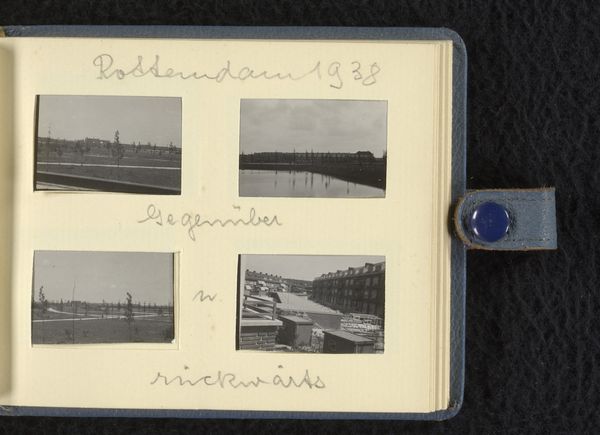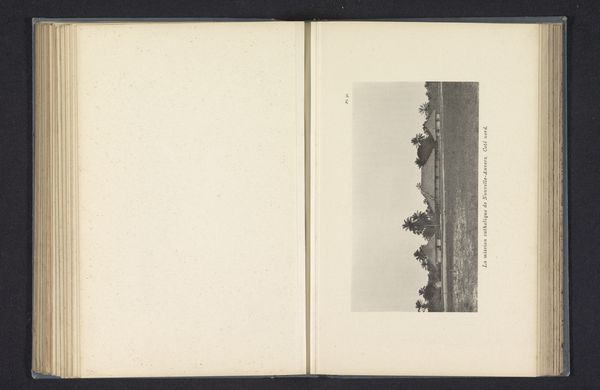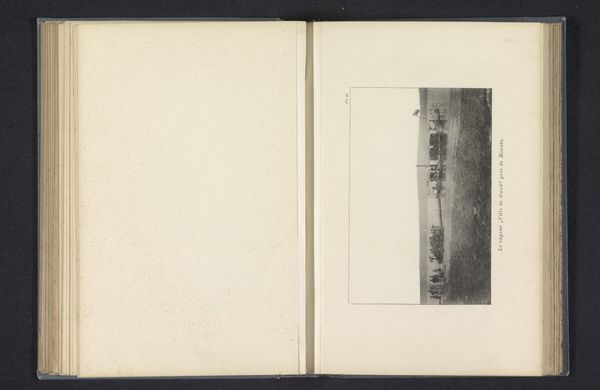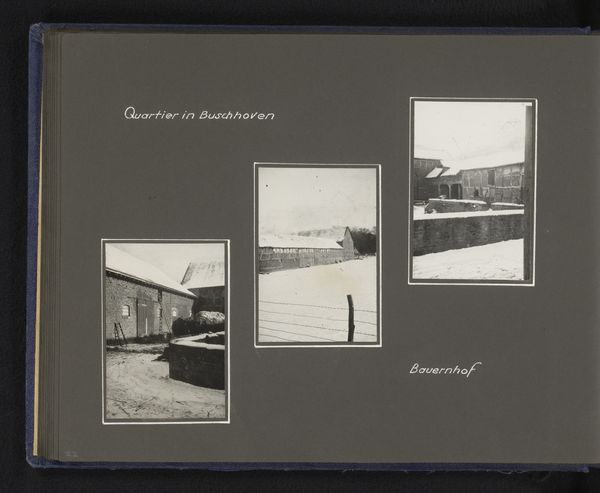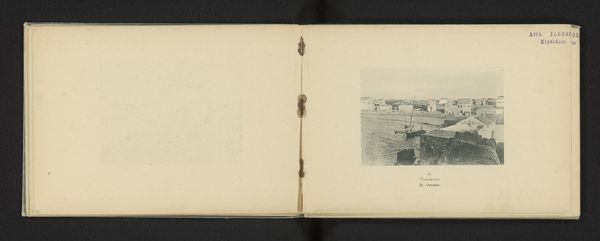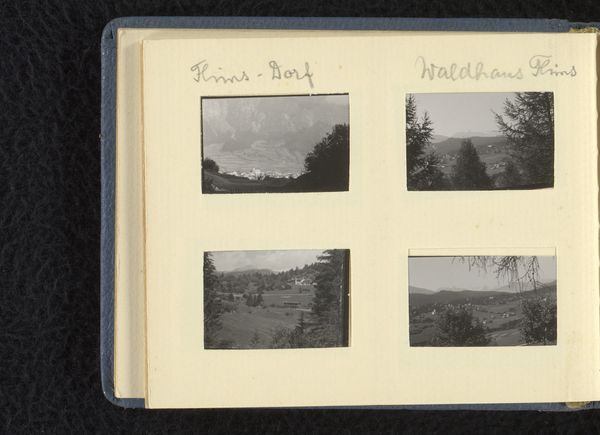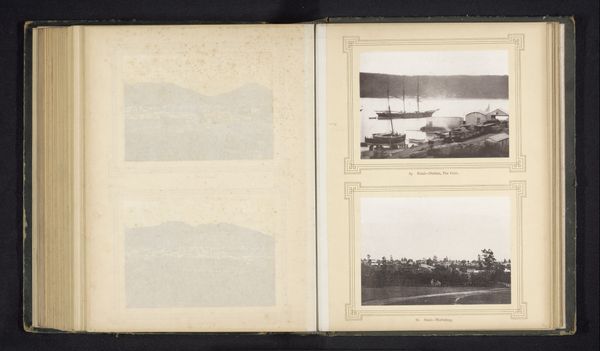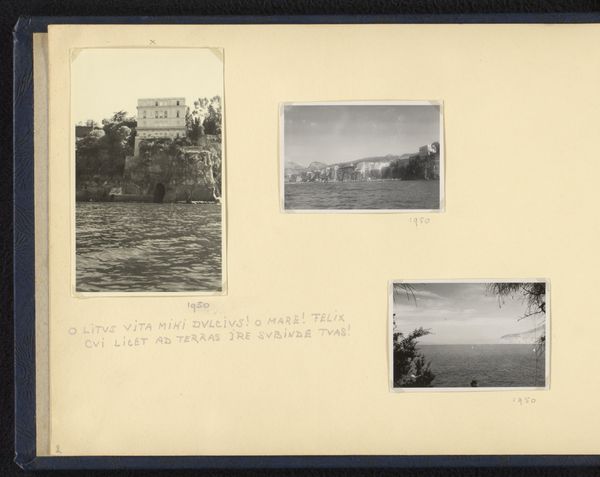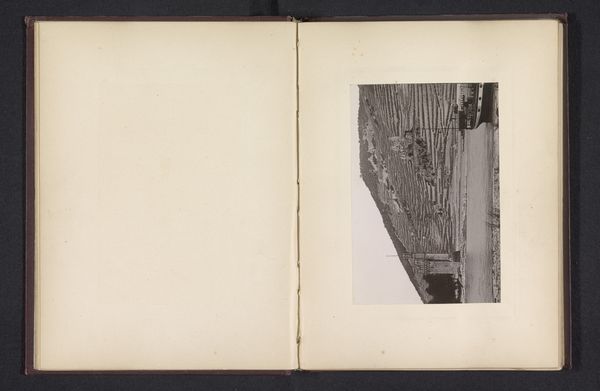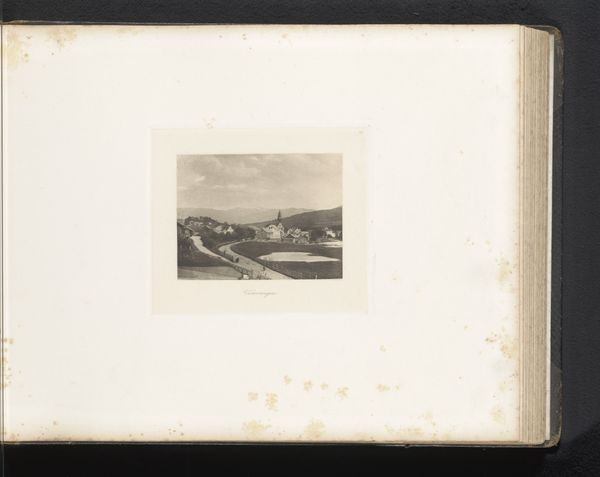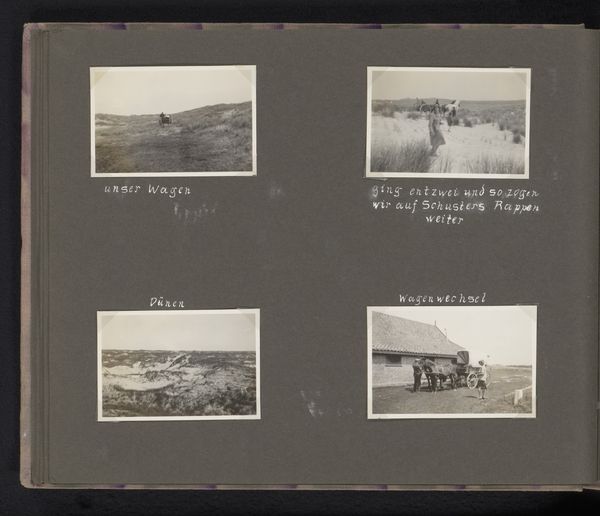
photography, albumen-print
#
type repetition
#
aged paper
#
homemade paper
#
dutch-golden-age
#
paperlike
#
typeface
#
landscape
#
street-photography
#
photography
#
fading type
#
stylized text
#
thick font
#
albumen-print
#
realism
#
historical font
#
columned text
Dimensions: height 33 mm, width 44 mm, height 85 mm, width 105 mm
Copyright: Rijks Museum: Open Domain
Curator: What strikes me most about this album page, titled "De buurt waar de familie Wachenheimer woonde, 1939, Rotterdam," is how it's a memory scrapbook materialized. Editor: There's an understated fragility here. The fading albumen prints and the aging paper hint at stories untold, secrets almost lost to time. It's quietly haunting. Curator: Exactly. The images are simple street scenes from Rotterdam, documented the same year World War II started. We see handwritten notes – “Rotterdam 1939” above, and then what looks to be “de wordende Dierentuin” – near the images, too. The “developing zoo”. Editor: A “developing zoo”, how innocent, yet it’s paired with images of such stark urban landscapes, full of empty spaces and potential. There's a compelling paradox. It's almost as if those small gardens and landscapes symbolize the dreams that are about to disappear. The promise of the future disrupted. Curator: Precisely! In terms of iconography, the sparseness of the landscape seems almost prophetic. And, paired with the typewritten titles... the stylized text creates a sense of formality juxtaposed with that homespun quality. It's a potent mix. Editor: I agree. This collision embodies the uncertainty, both on a personal and broader historical scale. The way the family compiled these photographs… there's an act of resistance to obliteration. A trace for posterity. Curator: Absolutely. The repetitive framing of the images in such close quarters intensifies the effect. Each little square is both a window into a place and a piece of a larger, broken whole. A community, perhaps? Editor: Yes! Even the act of arranging these on the page tells a story: arranging memories in order to make a sense of what to remember. Curator: Looking at this work helps us remember too; a layered story about memory, about the war's eve, about personal resilience… I feel like I’m catching the quiet echo of voices. Editor: For me, there is beauty in those fragmented moments—to extract the stories held between those edges of then, in the here and now.
Comments
No comments
Be the first to comment and join the conversation on the ultimate creative platform.
